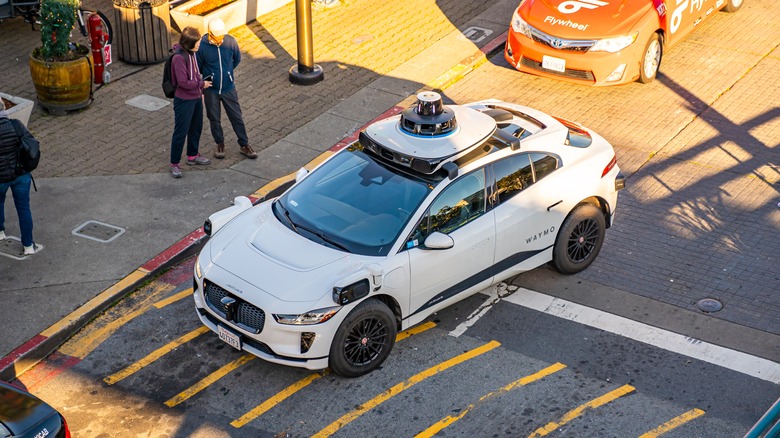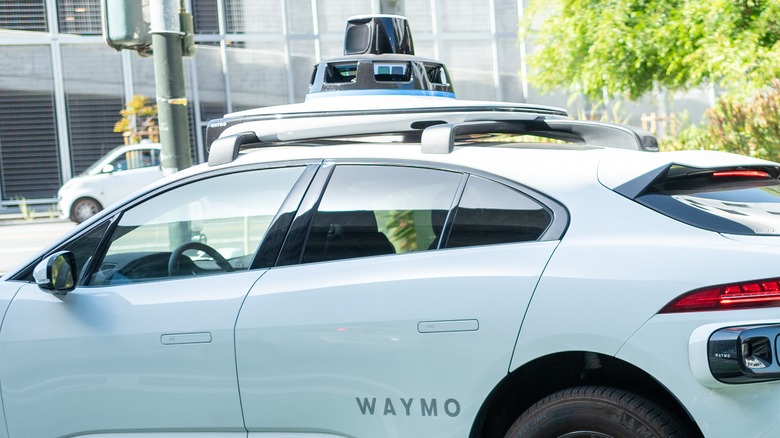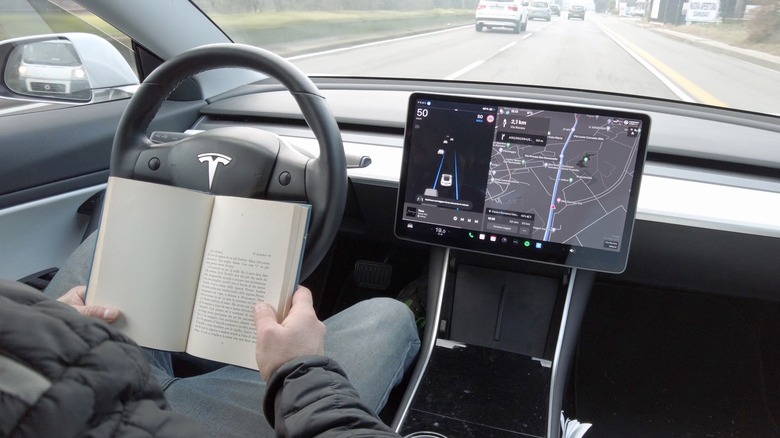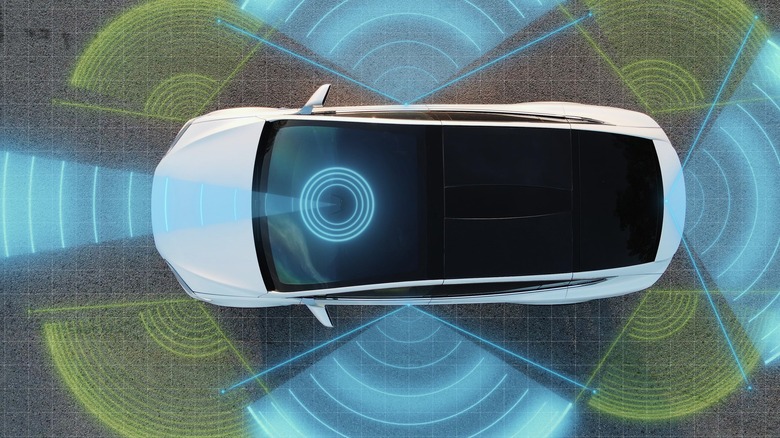
Iv-olga/Shutterstock
After many years of promises from industry leaders like Elon Musk, a true autonomous vehicle remains a fantasy. In the 2010s, we were constantly promised a world in which your car would become your personal chauffeur, taking you from point A to B all on its own while you napped, read books, or caught up on emails. Musk himself has promised that a full self-driving Tesla would be available within no more than a year or two – nearly every year for the past ten. It’s a tantalizing vision, since driverless cars could reduce accidents, discourage drunk driving, and even make cars more accessible for people with disabilities. However, as players like Apple and Google have massively backed off their own self-driving car ambitions, many drivers are left to wonder if those promises will ever become reality. In the meantime, far from saving lives, self-driving cars have led to fatal accidents.
The state of autonomous driving today is characterized by brief moments of robotic intelligence. Lane assist is a common feature on newer vehicles, and certain Tesla models can navigate stretches of highway with minimal driver input, but these advances don’t come close to realizing the promise of the full self-driving cars we’ve been hearing about over the past decade or so. To separate hype from reality, SlashGear spoke with Dr. Laine Mears, Chair of Automotive Manufacturing at Clemson University. What he told us paints the future of fully autonomous vehicles in a different — and sobering — light.
True self-driving is still some years away

Smith Collection/gado/Getty Images
At the time of writing, self-driving cars have hit a roadblock. Self-driving is measured on a scale of 0 to 5 administered by The Society of Automotive Engineers, where Level 0 means no assistance to the driver and Level 5 means full self-driving straight out of a sci-fi series. It’s the levels in between the two that have currently stymied those working to make Level 5 a reality. Most of the smart vehicles available to consumers, such as those from Tesla, top out around Level 2, meaning the driver must still be alert and ready to take over at any time, while robo-taxies available in some cities reach Level 4, meaning they do all the work but only within a limited, preprogrammed area.
The Gordian knot at the center of self-driving is real time adaptation. A human driver knows the difference between a plastic bag in the road and a human child, and can decide accordingly whether to swerve, slam the brakes, or cruise on through. A computer has a much harder time identifying novel environmental information. Show it a thousand pictures of children, and it still might not recognize the one-thousand-and-first.
Dr. Mears suggests we might be stuck in this state of affairs for quite some time. When asked what an autonomous vehicle rollout would look like in the United States, he said, «It is already here, with many new vehicles having lane keeping and adaptive cruise. However, recognizing features such as stoplights, traffic control signs, and unexpected elements like people and animals is still in the early stages. Roads in the U.S. are a variable and unknown environment, so localization information generation will be key. I do not see a true robust fully self-driving system coming widely for some years.»
Why has self-driving faced problems?

DELBO ANDREA/Shutterstock
Even those cars that do reach a high level of autonomy are currently prone to shocking errors that critics say prove how dangerous it is to deploy them on the road. For example, one Waymo car seemed to actively attempt to evade its own support team after it got stuck in traffic. As of August 2023, Mission Local reported that driverless cars had interfered with emergency services at least 55 times in San Fransisco, according to the city’s Fire Department. These are some of the milder incidents, since they ended with no injuries, but as reported by The L.A. Times, just last week a Tesla in self-driving mode crashed into a police car, with officers diving out of the way to avoid being crushed. This is the chicken-and-egg problem of full self-driving: to reach the goal, autonomous vehicles need to be deployed so that the computer systems can collect data to train on, but they’re currently too dangerous to deploy, and doing so would jeopardize public safety.
According to autonomous vehicle expert Dr. Laine Mears, autonomous technology has reached a plateau. «We have actually had the building blocks of full autonomy in place for years: lane keeping assist (automated steering) and adaptive cruise control (automated acceleration and braking) being the key innovations making a difference to the consumer,» he said. «The additional technologies (real-time localization, mapping, and immediate recognition of environmental features) are still being tested, but are not yet ready for widespread commercial adoption. Again, Tesla is leading the field here, gathering data every day from millions of vehicles on the road to inform its systems, but there is still a long way to go.»
It’s a long, long road to full self-driving

mpohodzhay/Shutterstock
Given that the road to full self-driving is much longer than many in the field once thought, just how long will we have to wait for the technology to catch up to our futuristic fantasies? Clemson University’s Dr. Laine Mears sounds far less optimistic than certain car company CEOs eager to sell you an Autopilot add-on. «I imagine a future where it is just too impractical and expensive to have broad adoption of true Level 5 systems (where one can just go to sleep in the back seat),» he asserted. «New advances in artificial intelligence may change that, but it remains to be seen.» Indeed, current generation AI can’t even write a haiku, let alone navigate the myriad, unique dangers of the road. It may be a piece of the puzzle, but only once the technology reaches maturity.
Current generation AI carries the same problems as the machine learning of the previous decade used for self-driving cars. The models need endless data to function, the collection of which is a logistical nightmare. Even if it worked, AI requires large amounts of processing power that would make real-time decision making difficult. In the meantime, there are ways you can travel by land without touching the steering wheel. Trains still exist, and although the United States lags behind the rest of the developed world in high-speed rail, continental travel is nonetheless possible. Meanwhile, most major cities have public transit systems that are easy to navigate without the hassle of city traffic. These options are all far safer than even a short car ride, and you can kick back, nap, or catch up on work, just like Musk promised you’d be able to do in a Tesla by now.